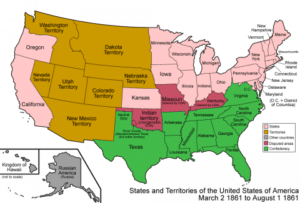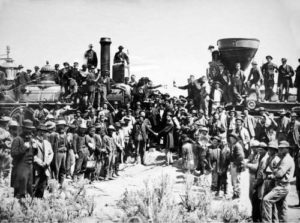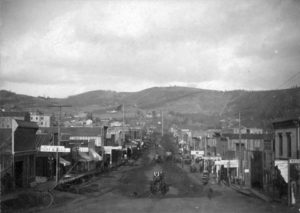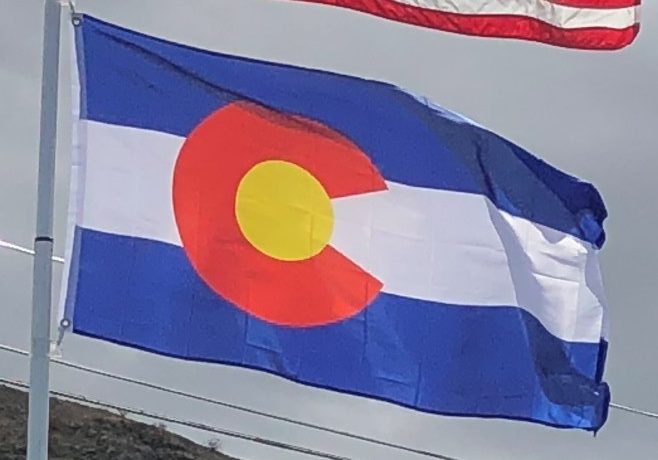
On April 12, 1861, South Carolina artillery opened fire on Fort Sumter to start the American Civil War. While many gold seekers held sympathies for the Confederacy, the vast majority remained fiercely loyal to the Union cause.
In 1862, a force of Texas cavalry invaded the Territory of New Mexico and captured Santa Fe on March 10. The object of this Western Campaign was to seize or disrupt the gold fields of Colorado and California and to seize ports on the Pacific Ocean for the Confederacy. A hastily organized force of Colorado volunteers force-marched from Denver City, Colorado Territory, to Glorieta Pass, New Mexico Territory, in an attempt to block the Texans. On March 28, the Coloradans and local New Mexico volunteers stopped the Texans at the Battle of Glorieta Pass, destroyed their cannon and supply wagons, and dispersed 500 of their horses and mules. The Texans were forced to retreat to Santa Fe. Having lost the supplies for their campaign and finding little support in New Mexico, the Texans abandoned Santa Fe and returned to San Antonio in defeat. The Confederacy made no further attempts to seize the Southwestern United States.

In the midst and aftermath of Civil War, many discouraged prospectors returned to their homes, but a few stayed and developed mines, mills, farms, ranches, roads, and towns in Colorado Territory. On September 14, 1864, James Huff discovered silver near Argentine Pass, the first of many silver strikes. In 1867, the Union Pacific Railroad laid its tracks west to Weir, now Julesburg, in the northeast corner of the Territory. The Union Pacific linked up with the Central Pacific Railroad at Promontory Summit, Utah, on May 10, 1869, to form the First Transcontinental Railroad.

The Denver Pacific Railway reached Denver in June the following year, and the Kansas Pacific arrived two months later to forge the second line across the continent. In 1872, rich veins of silver were discovered in the San Juan Mountains on the Ute Indian reservation in southwestern Colorado. The Ute people were removed from the San Juans the following year.
Statehood:
The United States Congress passed an enabling act on March 3, 1875, specifying the requirements for the Territory of Colorado to become a state. On August 1, 1876, 28 days after the Centennial of the United States, U.S. President Ulysses S. Grant signed a proclamation admitting Colorado to the Union as the 38th state and earning it the moniker “Centennial State”.
The discovery of a major silver lode near Leadville in 1878 triggered the Colorado Silver Boom. The Sherman Silver Purchase Act of 1890 invigorated silver mining, and Colorado’s last, but greatest, gold strike at Cripple Creek a few months later lured a new generation of gold seekers.

Colorado women were granted the right to vote beginning on November 7, 1893, making Colorado the second state to grant universal suffrage and the first one by a popular vote. The repeal of the Sherman Silver Purchase Act in 1893 led to a staggering collapse of the mining and agricultural economy of Colorado, but the state slowly and steadily recovered. Between the 1880s and 1930s, Denver’s floriculture industry developed into a major industry in Colorado. This period became known locally as the Carnation Gold Rush.
